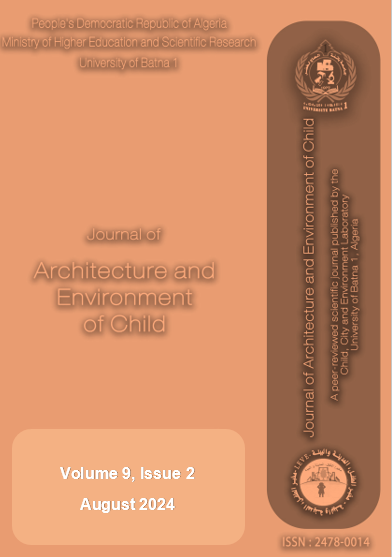The Status of the Child in Urban Policy: The Furnishing of Public Spaces in Algerian Cities
The Case of Public Spaces in the City of Batna
Keywords:
: Child, ; urban policy, urban furnishing, public space, ; Batna cityAbstract
Urban furnishing is defined as the totality of elements installed in the urban space for an aesthetic or functional service purpose through which it reflects the identity of the city and enables the urban space to become usable, as it is an important element in the city in order to improve the quality of urban life and create a comfortable environment that meets the needs of users from all segments. In the best way.
The study aims to examine the strategy used in furnishing public spaces in Algerian cities in general by tracking the legislative laws that stipulate this and in the city of Batna in particular by conducting interviews with the executive bodies in charge of managing these spaces. On the other hand, the status of the child in these legislative laws and how they were embodied was traced. In the field of study. To achieve the desired goal, the analytical approach was used to extract information by reading various legislative texts related to the development of public spaces, as well as analyzing the information extracted from the field interview to determine the child’s status in these spaces. The study concluded that both the legislative and executive sides lack a clear policy that guarantees the child a place in public space and its components, which calls for a voice to be heard by the legislator to reconsider the laws that regulate the management of public spaces, guarantee the right of every age group to them, and ensure their implementation by the concerned authorities

